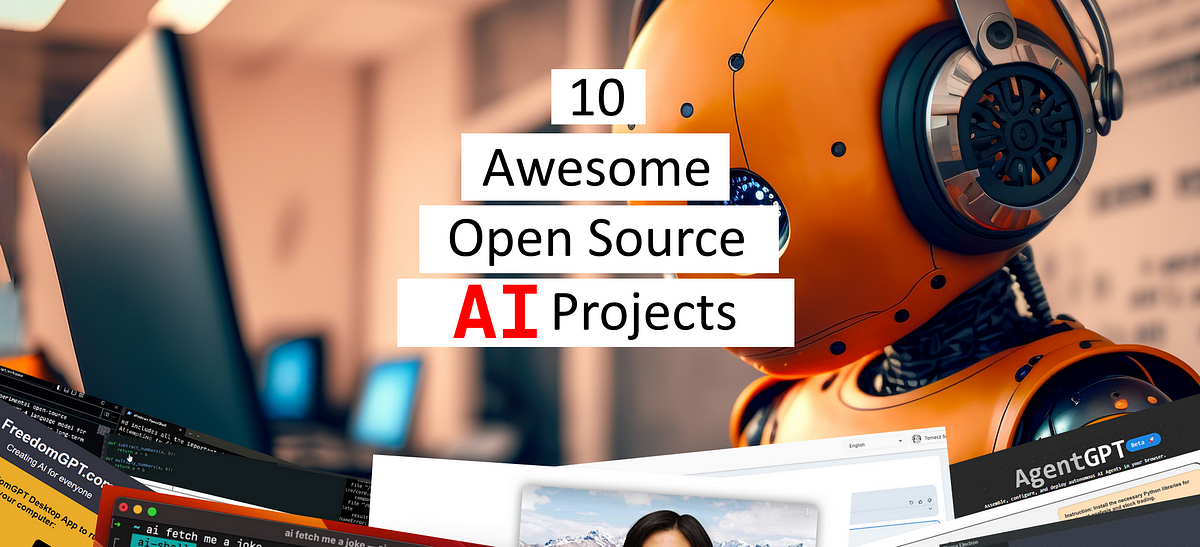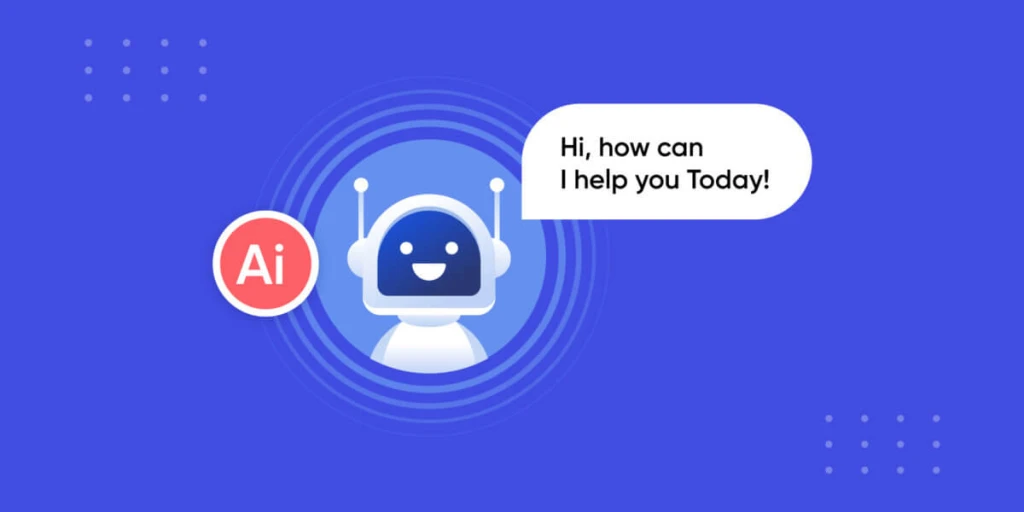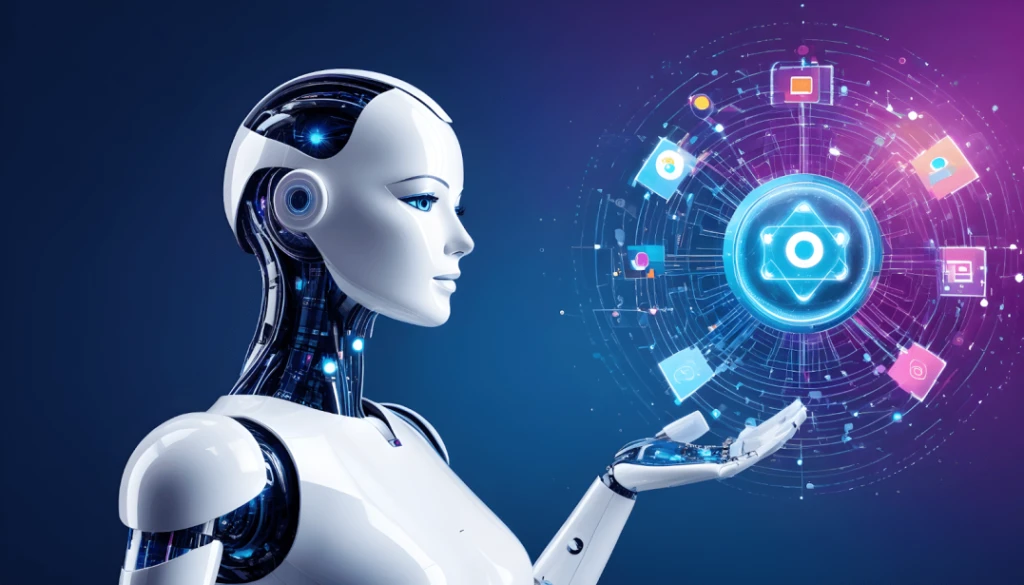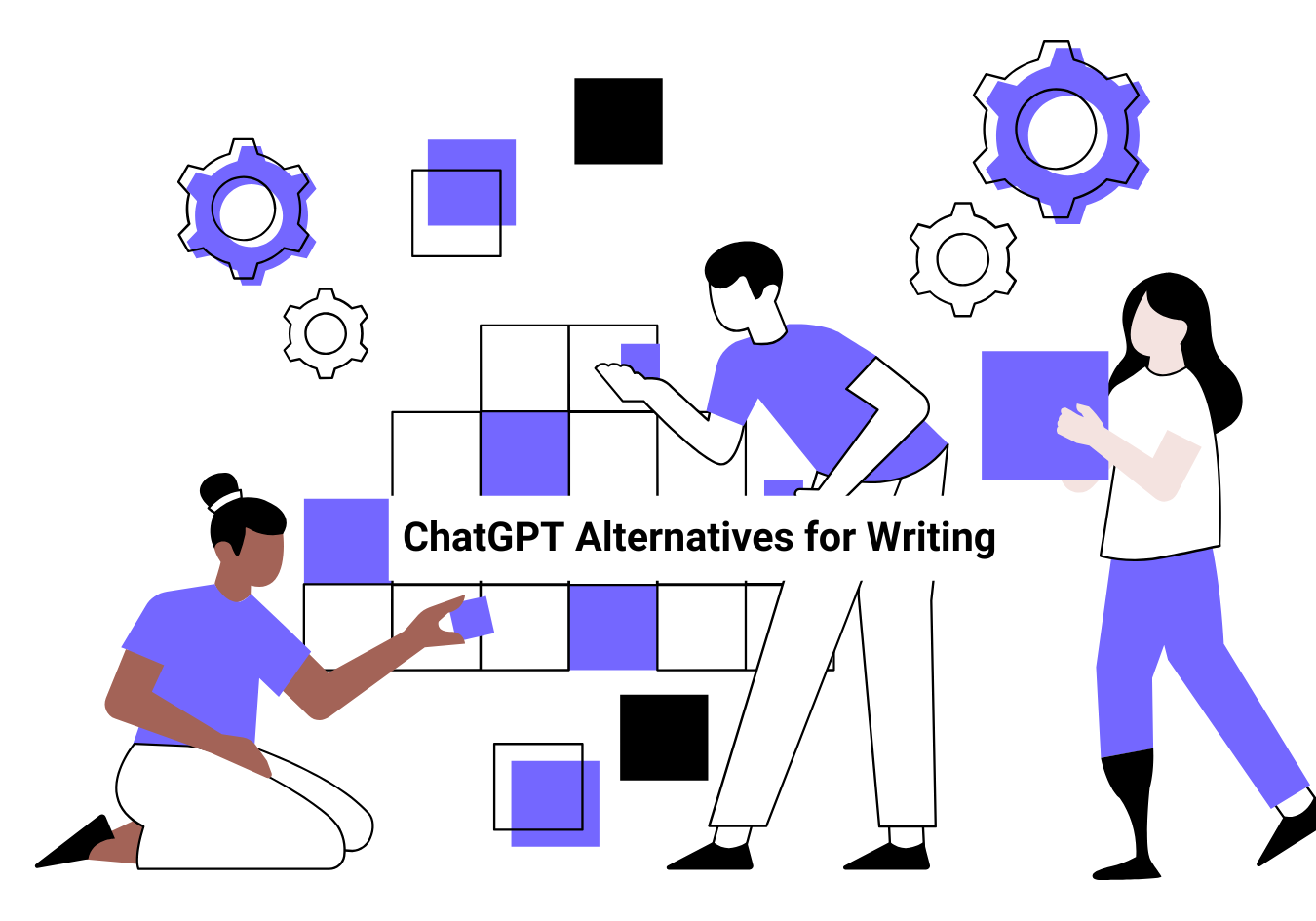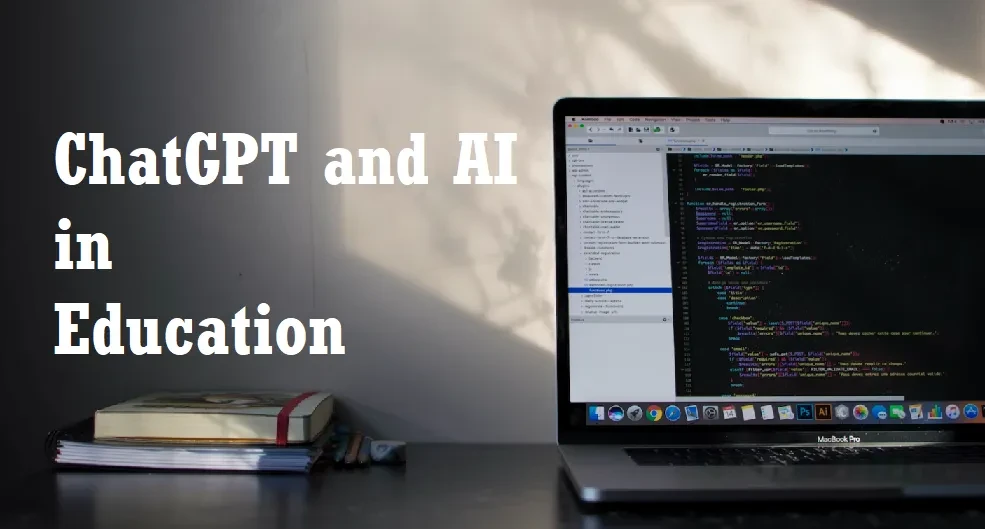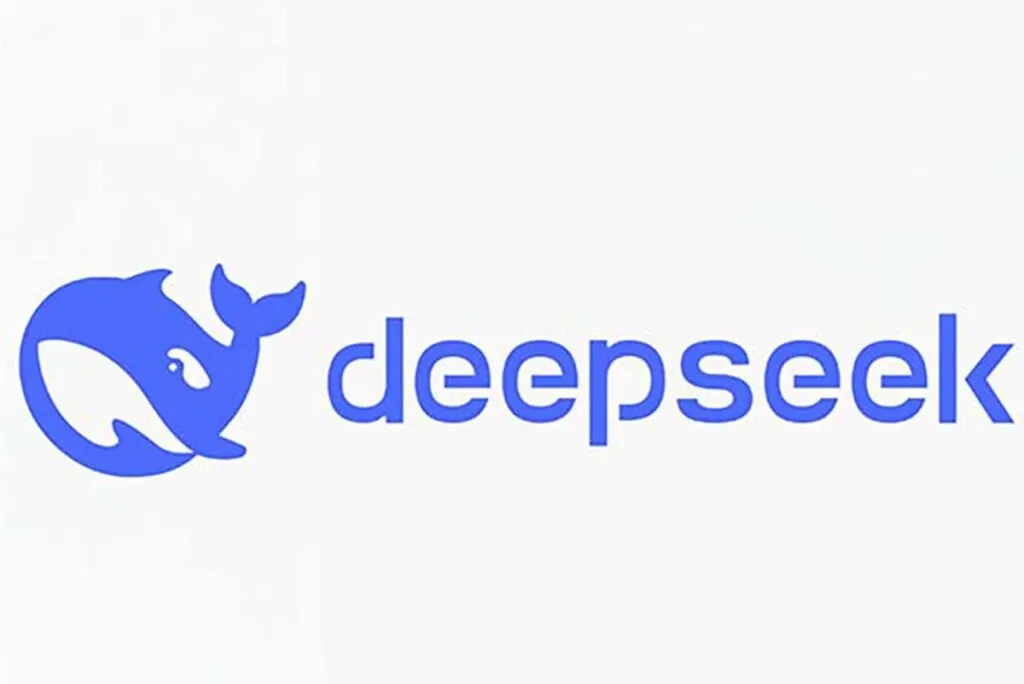SİZİN web sitenizde yapay zekayı 60 saniyede
Yapay zekamızın web sitenizi anında nasıl analiz ettiğini ve kişiselleştirilmiş bir sohbet robotu oluşturduğunu görün - kayıt olmadan. Sadece URL'nizi girin ve nasıl çalıştığını izleyin!
Giriş: Açık Kaynaklı Yapay Zekanın Altın Çağı
Açık kaynaklı AI projeleri, akademik meraklardan, endüstriler genelinde uygulamaları güçlendiren üretime hazır araçlara dönüştü. Son teknolojiye erişimi demokratikleştirdiler, tescilli sistemlerin eşleşemeyeceği özelleştirmeyi mümkün kıldılar ve bilgi paylaşımını ve inovasyonu hızlandıran canlı topluluklar yarattılar.
Bu makale şu anda en etkileyici on açık kaynaklı AI projesini inceliyor. Bu projeler yalnızca teknik yetenekleriyle değil, daha geniş AI ekosistemi üzerindeki etkileri, karmaşık sorunları çözmeye yönelik yenilikçi yaklaşımları ve yapay zeka gelişiminin geleceğini şekillendirme potansiyelleriyle öne çıkıyor.
Ticari tekliflerle rekabet eden büyük dil modellerinden, belirli sorunları olağanüstü verimlilikle çözen uzmanlaşmış araçlara kadar, bu projeler topluluk odaklı AI geliştirmenin en ileri noktasını temsil ediyor. İster makine öğrenimi araştırmacısı, ister uygulama geliştiricisi olun veya sadece AI teknolojisinin geleceğiyle ilgileniyor olun, bunlar şu anda izlemeye değer projeler.
1. Hugging Face Transformers: Açık Kaynaklı Yapay Zeka Merkezi
Neden Çığır Açıcı?
Transformers kütüphanesi başlı başına yeterince etkileyici; binlerce önceden eğitilmiş modelle çalışmak için birleşik bir API sağlıyor. Ancak Hugging Face'i gerçekten devrim niteliğinde yapan şey daha geniş ekosistemidir:
Model Hub: 150.000'den fazla serbestçe erişilebilen önceden eğitilmiş modelle Hub, dil, görüntü, ses ve çok modlu uygulamaları kapsayan dünyanın en büyük paylaşımlı makine öğrenimi modelleri deposu haline geldi.
Veri kümeleri: Modelleri eğitmek ve değerlendirmek için binlerce düzenlenmiş, sürüm kontrollü veri kümesi; AI geliştirmenin önündeki en önemli engellerden birini ele alıyor.
Alanları: Herkesin açık modeller üzerine inşa edilmiş çalışan uygulamaları sergilemesini sağlayan, etkileşimli makine öğrenimi demolarını dağıtmak için bir altyapı.
İşbirlikçi İş Akışları: Modeller ve veri kümeleri için Git tabanlı sürüm kontrolü, AI projelerinde iş birliğini yazılım geliştirme kadar akıcı hale getirir.
Gerçek Dünya Etkisi
Hugging Face, yeni başlayan şirketlerden Fortune 500 şirketlerine kadar sayısız üretim AI sisteminin omurgası haline geldi. Tüm makine öğrenimi yaşam döngüsü için kapsamlı bir altyapı sağlayarak, gelişmiş AI yeteneklerini uygulamadaki engelleri önemli ölçüde azalttı.
Topluluk yönü yeterince vurgulanamaz; Hugging Face, AI'nın demokratikleşmesini hızlandıran bir paylaşım ve iş birliği kültürü yarattı. Araştırmacılar yeni mimarileri paylaşabilir, uygulayıcılar kullanım durumları için özel modeller bulabilir ve herkes kolektif bilgi ve kaynaklardan faydalanır.
Hugging Face'in kurucu ortağı Julien Chaumond, bu topluluk odağını vurguluyor: "Misyonumuz iyi makine öğrenimini demokratikleştirmek. Herkesin katkıda bulunması ve birbirlerinin çalışmalarını geliştirmesi, daha iyi AI'ya giden en hızlı yoldur."
Önemli Özellikler ve Yetenekler
AutoClass Arayüzü: Belirli görevler için en uygun önceden eğitilmiş modeli otomatik olarak seçer ve uygulamayı basitleştirir.
Model Kartları: Model yetenekleri, sınırlamaları ve önyargıları hakkında şeffaflık sağlayan standartlaştırılmış belgeler.
Optimum Kütüphane: Farklı donanım platformlarında model performansını optimize etmek için araçlar.
Değerlendirme Donanımı: Model performansını karşılaştırmak için standartlaştırılmış kıyaslama.
Hugging Face Transformers, açık kaynak kodlu yazılımın bir sektörü nasıl temelden dönüştürebileceğini ve tüm AI ekosistemine fayda sağlayan paylaşımlı bir altyapı yaratabileceğini örneklemektedir.
2. LangChain: Yapay Zeka Uygulamaları İçin Çerçeve Oluşturma
Neden Çığır Açıcı
LangChain, ham AI yetenekleri ile kullanışlı uygulamalar arasındaki kritik boşluğu ele alarak dil modelleriyle desteklenen uygulamalar geliştirmek için kapsamlı bir çerçeve sunar:
Birleştirilebilir Zincirler: Birden fazla AI yeteneğini tutarlı iş akışlarına birleştirmek için esnek bir mimari.
Ajanlar: Farklı araçları çağırarak görevleri akıl yürütebilen, planlayabilen ve yürütebilen otonom AI sistemlerinin uygulanması.
Bellek Sistemleri: Zaman içinde konuşmalarda ve süreçlerde bağlamı korumak için çeşitli yöntemler.
Geri Alma-Geliştirilmiş Üretim: Dil modellerini belirli veri kaynaklarına dayandırmak, alan-özel uygulamalar için doğruluklarını ve kullanışlılıklarını önemli ölçüde artırmak için araçlar.
Araç Kullanımı: AI sistemlerinin harici uygulamalar, veritabanları ve API'lerle etkileşim kurması için standartlaştırılmış arayüzler.
Gerçek Dünya Etkisi
LangChain, müşteri hizmetleri otomasyonundan içerik oluşturma platformlarına ve özel araştırma araçlarına kadar binlerce AI uygulaması için olmazsa olmaz bir altyapı haline geldi. Esnek mimarisi, geliştiricilerin aksi takdirde aylarca özel geliştirme gerektirecek karmaşık AI uygulamalarını hızla prototiplemelerine ve yinelemelerine olanak tanır.
Proje, açık kaynaklı yazılımın inovasyonu nasıl hızlandırdığını örnekliyor: AI uygulama geliştirmedeki ortak kalıplar için standartlaştırılmış bileşenler sağlayarak LangChain, geliştiricilerin temel altyapıyı yeniden inşa etmek yerine benzersiz değere odaklanmasını sağlıyor.
LangChain'in kurucu ortağı Harrison Chase bu felsefeyi şöyle açıklıyor: "Amacımız, gerçekten yararlı olan AI uygulamaları oluşturmayı 10 kat daha hızlı hale getirmek. Bu, yalnızca dil modellerine API çağrıları yapmakla kalmayıp, veri kaynaklarına bağlanma, bağlamı koruma, güvenilir iş akışlarını yürütme gibi tüm çevreleyen sorunları çözmek anlamına geliyor."
Önemli Özellikler ve Yetenekler
Belge Yükleyiciler: PDF'lerden web sayfalarına ve veritabanlarına kadar düzinelerce veri kaynağı için önceden oluşturulmuş bağlayıcılar.
Vektör Depoları: Anlamsal arama yetenekleri için vektör veritabanlarıyla entegrasyonlar.
Yapılandırılmış Çıktı: Yapılandırılmamış metinden yapılandırılmış verileri güvenilir bir şekilde çıkarmak için araçlar.
Değerlendirme Çerçevesi: Uygulama performansını test etme ve iyileştirme yöntemleri.
LangChain, açık kaynaklı projelerin nasıl tamamen yeni kategoriler yaratabileceğini ve hızla ortaya çıkan bir teknoloji için kritik altyapı haline gelebileceğini gösteriyor.
3. LocalAI: Yapay Zekayı Donanımınıza Getiriyor
Neden Çığır Açıcıdır
LocalAI, erişilebilirlik ve pratikliği önceliklendiren bir mimariyle yapay zeka modellerini yerel olarak çalıştırmak için eksiksiz bir platform sunar:
API Uyumluluğu: Geliştiricilerin kod değişikliği yapmadan bulut ve yerel dağıtım arasında geçiş yapmasına olanak tanıyan OpenAI uyumlu API'leri yerel olarak uygular.
Model Zoo: Dil modellerinden görüntü oluşturuculara ve ses işlemeye kadar çok çeşitli açık modellere önceden yapılandırılmış erişim.
Donanım Optimizasyonu: Mevcut donanıma dayalı otomatik yapılandırma, modellerin oyun dizüstü bilgisayarlarından özel uç cihazlara kadar her şeyde verimli bir şekilde çalışmasını sağlar.
Kantizasyon Desteği: Kabul edilebilir performansı korurken sınırlı donanımda çalışacak şekilde modelleri sıkıştırmak için yerleşik araçlar.
Gizlilik Öncelikli Tasarım: Harici iletişim olmadan tam veri egemenliği, veri gizliliğinin kritik olduğu kullanım durumlarını etkinleştirir.
Gerçek Dünya Etkisi
LocalAI, bulut tabanlı yapay zekanın pratik olmayacağı tamamen yeni uygulama kategorilerini etkinleştirdi; çevrimdışı sesli asistanlardan gizliliğe duyarlı tıbbi uygulamalara ve güvenilir bağlantının olmadığı ortamlardaki endüstriyel sistemlere kadar.
Veri gizliliği veya bulut maliyetleri konusunda endişe duyan geliştiriciler ve kuruluşlar için LocalAI, bu endişeleri giderirken çoğu yeteneği koruyan pratik bir alternatif sunar. Veri yönetimi gereksinimlerinin bulut yapay zeka hizmetlerinin uygulanmasını zorlaştırdığı düzenlenmiş endüstrilerde özellikle değerlidir.
LocalAI'ye önemli katkıda bulunanlardan Enrico Bergamini, bu odağı vurgular: "Yapay zeka, yalnızca büyük bulut bütçeleri veya özel donanımları olanlar için değil, herkes için erişilebilir olmalıdır. Zaten sahip olduğunuz donanımda etkileyici yapay zeka yeteneklerini çalıştırabileceğinizi kanıtlıyoruz."
Önemli Özellikler ve Yetenekler
Konteyner Tabanlı Dağıtım: Ortamlar arasında tutarlı dağıtım için Docker kullanılarak basit kurulum.
Fısıltı API'si: Tamamen yerel olarak çalışan konuşmadan metne yetenekleri.
Kararlı Yayılım Entegrasyonu: Harici hizmetler olmadan görüntü oluşturma.
Çok Modlu Destek: Birleşik bir sistemde metin, görüntü, ses ve video yetenekleri.
LocalAI, açık kaynak kodunun ticari yaklaşımların sınırlamalarını doğrudan nasıl ele alabileceğini, farklı uzlaşmaları önceliklendiren ve yeni kullanım durumlarını mümkün kılan alternatifler yaratabileceğini göstermektedir.
4. Ollama: Yerel LLM Dağıtımını Basitleştirme
Neden Çığır Açıcı
Ollama, yerel AI'yı erişilebilir kılmak için teknik karmaşıklığı olağanüstü kullanılabilirlikle birleştiriyor:
Tek Satırlık Kurulum: Başlamak için karmaşık yapılandırma veya bağımlılıklar olmadan yalnızca tek bir komut gerekir.
Model Kütüphanesi: Her biri farklı yetenek ve kaynak gereksinimi dengelerine sahip, optimize edilmiş modellerin küratörlüğünü yapılmış bir koleksiyonu.
Komut Satırı Arayüzü: Modelleri indirmek ve konuşmaları başlatmak için basit, sezgisel komutlar.
API Sunucusu: Yerel modelleri uygulamalara ve iş akışlarına entegre etmek için yerleşik API uç noktası.
Model Yönetimi: Modelleri indirmek, güncellemek ve kaldırmak için basit araçlar.
Gerçek Dünya Etkisi
Ollama, yerel AI modelleri için hedef kitleyi önemli ölçüde genişletti ve bunları teknik karmaşıklık nedeniyle caydırılabilecek geliştiriciler, araştırmacılar ve meraklılar için erişilebilir hale getirdi. Bu, çok sayıda alanda deney ve benimsemeyi hızlandırdı.
Gizliliğe önem veren kullanıcılar ve kuruluşlar için Ollama, hassas verileri harici hizmetlere göndermeden modern AI yeteneklerini keşfetmenin pratik bir yolunu sunar. Basitliği, bulut hesapları veya özel donanım gerektirmeden uygulamalı öğrenmeyi mümkün kıldığı eğitim ortamlarında özellikle popüler hale getirmiştir.
Ollama katılımcısı Matt Schulte bu odağı şöyle açıklıyor: "Yerel bir LLM çalıştırmayı, diğer herhangi bir uygulamayı yüklemek kadar basit hale getirmek istedik. Teknoloji karmaşıktır, ancak kullanımı karmaşık olmamalıdır."
Önemli Özellikler ve Yetenekler
Model Özelleştirme: Özel parametrelerle modellerin özel sürümlerini oluşturmak için araçlar.
Konuşma Bağlamı Yönetimi: Doğal etkileşimler için sorgular arasında bağlamı korur.
GPU Hızlandırma: Gelişmiş performans için mevcut GPU kaynaklarının otomatik kullanımı.
Çok Modlu Destek: Görüntüleri ve diğer veri türlerini işlemek için metnin ötesine geçme.
Ollama, gerçekten dönüştürücü teknolojinin görünmez hale geldiği ilkesine örnek teşkil ediyor; son teknoloji AI yeteneklerini bilgisayarınızdaki diğer araçlar gibi hissettiriyor.
SİZİN web sitenizde yapay zekayı 60 saniyede
Yapay zekamızın web sitenizi anında nasıl analiz ettiğini ve kişiselleştirilmiş bir sohbet robotu oluşturduğunu görün - kayıt olmadan. Sadece URL'nizi girin ve nasıl çalıştığını izleyin!
5. Mistral AI: Açık Modeller için Yeni Standartlar Belirleme
Meta Description: Discover the most groundbreaking open source AI projects that are pushing boundaries, democratizing advanced technology, and creating new possibilities for developers worldwide.
Introduction: The Golden Age of Open Source AI
We're living in an unprecedented era for artificial intelligence development. While commercial AI solutions continue to make headlines, the open source community has become an extraordinary force driving innovation, accessibility, and transparency in AI technology. These community-driven projects are not just alternatives to proprietary systems—in many cases, they're pushing the boundaries of what's possible and setting new standards for the entire industry.
Open source AI projects have transformed from academic curiosities into production-ready tools powering applications across industries. They've democratized access to cutting-edge technology, enabled customization that proprietary systems can't match, and created vibrant communities that accelerate knowledge sharing and innovation.
This article explores ten of the most impressive open source AI projects right now. These projects stand out not just for their technical capabilities but for their impact on the broader AI ecosystem, their innovative approaches to solving complex problems, and their potential to shape the future of artificial intelligence development.
From large language models rivaling commercial offerings to specialized tools solving specific problems with remarkable efficiency, these projects represent the cutting edge of community-driven AI development. Whether you're a machine learning researcher, an application developer, or simply interested in the future of AI technology, these are the projects worth watching right now.
1. Hugging Face Transformers: The Open Source AI Hub
Hugging Face Transformers has evolved from a simple NLP library into what many consider the GitHub for machine learning—a comprehensive ecosystem that's fundamentally changing how AI models are developed, shared, and deployed.
Why It's Groundbreaking
The Transformers library itself is impressive enough—providing a unified API for working with thousands of pre-trained models. But what makes Hugging Face truly revolutionary is its broader ecosystem:
Model Hub: With over 150,000 freely available pre-trained models, the Hub has become the world's largest repository of shared machine learning models, spanning language, vision, audio, and multimodal applications.
Datasets: Thousands of curated, version-controlled datasets for training and evaluating models, addressing one of the most significant barriers to AI development.
Spaces: An infrastructure for deploying interactive machine learning demos, enabling anyone to showcase working applications built on open models.
Collaborative Workflows: Git-based version control for models and datasets, making collaboration on AI projects as streamlined as software development.
Real-World Impact
Hugging Face has become the backbone of countless production AI systems, from startups to Fortune 500 companies. By providing a comprehensive infrastructure for the entire machine learning lifecycle, it has dramatically reduced the barriers to implementing advanced AI capabilities.
The community aspect cannot be overstated—Hugging Face has created a culture of sharing and collaboration that's accelerating the democratization of AI. Researchers can share new architectures, practitioners can find specialized models for their use cases, and everyone benefits from the collective knowledge and resources.
Julien Chaumond, co-founder of Hugging Face, emphasizes this community focus: "Our mission is to democratize good machine learning. Having everyone contribute and build on each other's work is the fastest path to better AI."
Notable Features and Capabilities
AutoClass Interface: Automatically selects the optimal pre-trained model for specific tasks, simplifying implementation.
Model Cards: Standardized documentation that provides transparency about model capabilities, limitations, and biases.
Optimum Library: Tools for optimizing model performance across different hardware platforms.
Evaluation Harness: Standardized benchmarking to compare model performance.
Hugging Face Transformers exemplifies how open source can fundamentally transform an industry, creating a shared infrastructure that benefits the entire AI ecosystem.
2. LangChain: Building the Framework for AI Applications
LangChain emerged to solve a critical problem: while foundation models provide impressive capabilities, building practical applications with them requires significant additional infrastructure. In just over a year, it has become the de facto standard for developing LLM-powered applications.
Why It's Groundbreaking
LangChain provides a comprehensive framework for developing applications powered by language models, addressing the critical gap between raw AI capabilities and useful applications:
Composable Chains: A flexible architecture for combining multiple AI capabilities into coherent workflows.
Agents: Implementation of autonomous AI systems that can reason, plan, and execute tasks by calling different tools.
Memory Systems: Various methods for maintaining context in conversations and processes over time.
Retrieval-Augmented Generation: Tools for grounding language models in specific data sources, dramatically improving their accuracy and usefulness for domain-specific applications.
Tool Usage: Standardized interfaces for AI systems to interact with external applications, databases, and APIs.
Real-World Impact
LangChain has become essential infrastructure for thousands of AI applications, from customer service automation to content generation platforms to specialized research tools. Its flexible architecture allows developers to rapidly prototype and iterate on complex AI applications that would otherwise require months of custom development.
The project exemplifies how open source accelerates innovation—by providing standardized components for common patterns in AI application development, LangChain lets developers focus on unique value rather than rebuilding basic infrastructure.
Harrison Chase, co-founder of LangChain, describes this ethos: "Our goal is to make it 10x faster to build AI applications that are actually useful. That means solving all the surrounding problems—connecting to data sources, maintaining context, executing reliable workflows—not just making API calls to language models."
Notable Features and Capabilities
Document Loaders: Pre-built connectors for dozens of data sources, from PDFs to web pages to databases.
Vector Stores: Integrations with vector databases for semantic search capabilities.
Structured Output: Tools for reliably extracting structured data from unstructured text.
Evaluation Framework: Methods for testing and improving application performance.
LangChain demonstrates how open source projects can create entirely new categories and rapidly become critical infrastructure for an emerging technology.
3. LocalAI: Bringing AI to Your Hardware
LocalAI represents a powerful movement in AI development—bringing sophisticated models to local hardware without requiring cloud services or expensive specialized equipment.
Why It's Groundbreaking
LocalAI provides a complete platform for running AI models locally, with an architecture that prioritizes accessibility and practicality:
API Compatibility: Implements OpenAI-compatible APIs locally, allowing developers to switch between cloud and local deployment without code changes.
Model Zoo: Pre-configured access to a wide range of open models, from language models to image generators to audio processing.
Hardware Optimization: Automatic configuration based on available hardware, making models run efficiently on everything from gaming laptops to specialized edge devices.
Quantization Support: Built-in tools for compressing models to run on limited hardware while maintaining acceptable performance.
Privacy-First Design: Complete data sovereignty with no external communication, enabling use cases where data privacy is critical.
Real-World Impact
LocalAI has enabled entirely new categories of applications where cloud-based AI would be impractical, from offline voice assistants to privacy-sensitive medical applications to industrial systems in environments without reliable connectivity.
For developers and organizations concerned about data privacy or cloud costs, LocalAI provides a practical alternative that maintains most capabilities while addressing these concerns. It's particularly valuable in regulated industries where data governance requirements make cloud AI services challenging to implement.
Enrico Bergamini, a key contributor to LocalAI, highlights this focus: "AI should be accessible to everyone, not just those with massive cloud budgets or specialized hardware. We're proving that you can run impressive AI capabilities on the hardware you already have."
Notable Features and Capabilities
Container-Based Deployment: Simple setup using Docker for consistent deployment across environments.
Whisper API: Speech-to-text capabilities that run entirely locally.
Stable Diffusion Integration: Image generation without external services.
Multi-Modal Support: Text, image, audio, and video capabilities in a unified system.
LocalAI demonstrates how open source can directly address limitations of commercial approaches, creating alternatives that prioritize different trade-offs and enable new use cases.
4. Ollama: Simplifying Local LLM Deployment
While various projects focus on running large language models locally, Ollama stands out for making the process remarkably straightforward even for non-technical users.
Why It's Groundbreaking
Ollama combines technical sophistication with exceptional usability to make local AI accessible:
One-Line Installation: Getting started requires just a single command, with no complex configuration or dependencies.
Model Library: A curated collection of optimized models, each with different capability and resource requirement trade-offs.
Command-Line Interface: Simple, intuitive commands for downloading models and starting conversations.
API Server: Built-in API endpoint for integrating local models into applications and workflows.
Model Management: Straightforward tools for downloading, updating, and removing models.
Real-World Impact
Ollama has dramatically expanded the audience for local AI models, making them accessible to developers, researchers, and enthusiasts who might otherwise have been deterred by technical complexity. This has accelerated experimentation and adoption across numerous domains.
For privacy-conscious users and organizations, Ollama provides a practical way to explore modern AI capabilities without sending sensitive data to external services. Its simplicity has made it particularly popular in educational settings, where it enables hands-on learning without requiring cloud accounts or specialized hardware.
Matt Schulte, Ollama contributor, explains this focus: "We wanted to make running a local LLM as simple as installing any other application. The technology is complex, but using it shouldn't be."
Notable Features and Capabilities
Model Customization: Tools for creating specialized versions of models with custom parameters.
Conversation Context Management: Maintains context between queries for natural interactions.
GPU Acceleration: Automatic utilization of available GPU resources for improved performance.
Multimodal Support: Expanding beyond text to handle images and other data types.
Ollama exemplifies the principle that truly transformative technology becomes invisible—making cutting-edge AI capabilities feel like any other tool on your computer.
5. Mistral AI: Setting New Standards for Open Models
Mistral AI burst onto the scene with models that challenge the conventional wisdom about the relationship between model size and capability, demonstrating that thoughtful architecture and training approaches can create remarkably powerful open models.
Why It's Groundbreaking
Mistral's approach combines architectural innovation with a commitment to open release:
Efficiency-First Design: Models that achieve remarkable performance with significantly fewer parameters than competitors.
Specialized Instruct Models: Versions specifically tuned for following instructions accurately, rivaling much larger closed-source models.
Sparse Mixture of Experts: Advanced architectures that dynamically activate different parts of the model based on input, dramatically improving efficiency.
Permissive Licensing: Models released under Apache 2.0, allowing both research and commercial applications without restrictions.
Multimodal Capabilities: Expanding beyond text to handle images and structured data inputs.
Real-World Impact
Mistral's models have enabled numerous applications and services that would otherwise have required proprietary models with restrictive licensing and higher resource requirements. Their combination of performance and efficiency has made sophisticated AI capabilities accessible to organizations with limited computational resources.
The permissive licensing and open weights have facilitated extensive research and customization, with hundreds of specialized adaptations created by the community for specific domains and languages. This has particularly benefited languages and use cases that receive less attention from commercial providers.
Arthur Mensch, CEO of Mistral AI, emphasizes this approach: "We believe in creating technology that's both state-of-the-art and genuinely open. Our models aren't just open in name—they're designed to be studied, modified, and deployed without restrictions."
Notable Features and Capabilities
Context Length Scaling: Models that efficiently handle very long contexts without performance degradation.
Code Generation: Strong capabilities for programming tasks across multiple languages.
Reasoning Abilities: Sophisticated logical reasoning comparable to much larger models.
Multi-Language Support: Strong performance across numerous languages beyond English.
Mistral demonstrates how open source innovation can challenge dominant commercial approaches, creating alternatives that prioritize different values and performance characteristics.
6. GGUF Ekosistemi: Model Dağıtımının Demokratikleştirilmesi
Meta Description: Discover the most groundbreaking open source AI projects that are pushing boundaries, democratizing advanced technology, and creating new possibilities for developers worldwide.
Introduction: The Golden Age of Open Source AI
We're living in an unprecedented era for artificial intelligence development. While commercial AI solutions continue to make headlines, the open source community has become an extraordinary force driving innovation, accessibility, and transparency in AI technology. These community-driven projects are not just alternatives to proprietary systems—in many cases, they're pushing the boundaries of what's possible and setting new standards for the entire industry.
Open source AI projects have transformed from academic curiosities into production-ready tools powering applications across industries. They've democratized access to cutting-edge technology, enabled customization that proprietary systems can't match, and created vibrant communities that accelerate knowledge sharing and innovation.
This article explores ten of the most impressive open source AI projects right now. These projects stand out not just for their technical capabilities but for their impact on the broader AI ecosystem, their innovative approaches to solving complex problems, and their potential to shape the future of artificial intelligence development.
From large language models rivaling commercial offerings to specialized tools solving specific problems with remarkable efficiency, these projects represent the cutting edge of community-driven AI development. Whether you're a machine learning researcher, an application developer, or simply interested in the future of AI technology, these are the projects worth watching right now.
1. Hugging Face Transformers: The Open Source AI Hub
Hugging Face Transformers has evolved from a simple NLP library into what many consider the GitHub for machine learning—a comprehensive ecosystem that's fundamentally changing how AI models are developed, shared, and deployed.
Why It's Groundbreaking
The Transformers library itself is impressive enough—providing a unified API for working with thousands of pre-trained models. But what makes Hugging Face truly revolutionary is its broader ecosystem:
Model Hub: With over 150,000 freely available pre-trained models, the Hub has become the world's largest repository of shared machine learning models, spanning language, vision, audio, and multimodal applications.
Datasets: Thousands of curated, version-controlled datasets for training and evaluating models, addressing one of the most significant barriers to AI development.
Spaces: An infrastructure for deploying interactive machine learning demos, enabling anyone to showcase working applications built on open models.
Collaborative Workflows: Git-based version control for models and datasets, making collaboration on AI projects as streamlined as software development.
Real-World Impact
Hugging Face has become the backbone of countless production AI systems, from startups to Fortune 500 companies. By providing a comprehensive infrastructure for the entire machine learning lifecycle, it has dramatically reduced the barriers to implementing advanced AI capabilities.
The community aspect cannot be overstated—Hugging Face has created a culture of sharing and collaboration that's accelerating the democratization of AI. Researchers can share new architectures, practitioners can find specialized models for their use cases, and everyone benefits from the collective knowledge and resources.
Julien Chaumond, co-founder of Hugging Face, emphasizes this community focus: "Our mission is to democratize good machine learning. Having everyone contribute and build on each other's work is the fastest path to better AI."
Notable Features and Capabilities
AutoClass Interface: Automatically selects the optimal pre-trained model for specific tasks, simplifying implementation.
Model Cards: Standardized documentation that provides transparency about model capabilities, limitations, and biases.
Optimum Library: Tools for optimizing model performance across different hardware platforms.
Evaluation Harness: Standardized benchmarking to compare model performance.
Hugging Face Transformers exemplifies how open source can fundamentally transform an industry, creating a shared infrastructure that benefits the entire AI ecosystem.
2. LangChain: Building the Framework for AI Applications
LangChain emerged to solve a critical problem: while foundation models provide impressive capabilities, building practical applications with them requires significant additional infrastructure. In just over a year, it has become the de facto standard for developing LLM-powered applications.
Why It's Groundbreaking
LangChain provides a comprehensive framework for developing applications powered by language models, addressing the critical gap between raw AI capabilities and useful applications:
Composable Chains: A flexible architecture for combining multiple AI capabilities into coherent workflows.
Agents: Implementation of autonomous AI systems that can reason, plan, and execute tasks by calling different tools.
Memory Systems: Various methods for maintaining context in conversations and processes over time.
Retrieval-Augmented Generation: Tools for grounding language models in specific data sources, dramatically improving their accuracy and usefulness for domain-specific applications.
Tool Usage: Standardized interfaces for AI systems to interact with external applications, databases, and APIs.
Real-World Impact
LangChain has become essential infrastructure for thousands of AI applications, from customer service automation to content generation platforms to specialized research tools. Its flexible architecture allows developers to rapidly prototype and iterate on complex AI applications that would otherwise require months of custom development.
The project exemplifies how open source accelerates innovation—by providing standardized components for common patterns in AI application development, LangChain lets developers focus on unique value rather than rebuilding basic infrastructure.
Harrison Chase, co-founder of LangChain, describes this ethos: "Our goal is to make it 10x faster to build AI applications that are actually useful. That means solving all the surrounding problems—connecting to data sources, maintaining context, executing reliable workflows—not just making API calls to language models."
Notable Features and Capabilities
Document Loaders: Pre-built connectors for dozens of data sources, from PDFs to web pages to databases.
Vector Stores: Integrations with vector databases for semantic search capabilities.
Structured Output: Tools for reliably extracting structured data from unstructured text.
Evaluation Framework: Methods for testing and improving application performance.
LangChain demonstrates how open source projects can create entirely new categories and rapidly become critical infrastructure for an emerging technology.
3. LocalAI: Bringing AI to Your Hardware
LocalAI represents a powerful movement in AI development—bringing sophisticated models to local hardware without requiring cloud services or expensive specialized equipment.
Why It's Groundbreaking
LocalAI provides a complete platform for running AI models locally, with an architecture that prioritizes accessibility and practicality:
API Compatibility: Implements OpenAI-compatible APIs locally, allowing developers to switch between cloud and local deployment without code changes.
Model Zoo: Pre-configured access to a wide range of open models, from language models to image generators to audio processing.
Hardware Optimization: Automatic configuration based on available hardware, making models run efficiently on everything from gaming laptops to specialized edge devices.
Quantization Support: Built-in tools for compressing models to run on limited hardware while maintaining acceptable performance.
Privacy-First Design: Complete data sovereignty with no external communication, enabling use cases where data privacy is critical.
Real-World Impact
LocalAI has enabled entirely new categories of applications where cloud-based AI would be impractical, from offline voice assistants to privacy-sensitive medical applications to industrial systems in environments without reliable connectivity.
For developers and organizations concerned about data privacy or cloud costs, LocalAI provides a practical alternative that maintains most capabilities while addressing these concerns. It's particularly valuable in regulated industries where data governance requirements make cloud AI services challenging to implement.
Enrico Bergamini, a key contributor to LocalAI, highlights this focus: "AI should be accessible to everyone, not just those with massive cloud budgets or specialized hardware. We're proving that you can run impressive AI capabilities on the hardware you already have."
Notable Features and Capabilities
Container-Based Deployment: Simple setup using Docker for consistent deployment across environments.
Whisper API: Speech-to-text capabilities that run entirely locally.
Stable Diffusion Integration: Image generation without external services.
Multi-Modal Support: Text, image, audio, and video capabilities in a unified system.
LocalAI demonstrates how open source can directly address limitations of commercial approaches, creating alternatives that prioritize different trade-offs and enable new use cases.
4. Ollama: Simplifying Local LLM Deployment
While various projects focus on running large language models locally, Ollama stands out for making the process remarkably straightforward even for non-technical users.
Why It's Groundbreaking
Ollama combines technical sophistication with exceptional usability to make local AI accessible:
One-Line Installation: Getting started requires just a single command, with no complex configuration or dependencies.
Model Library: A curated collection of optimized models, each with different capability and resource requirement trade-offs.
Command-Line Interface: Simple, intuitive commands for downloading models and starting conversations.
API Server: Built-in API endpoint for integrating local models into applications and workflows.
Model Management: Straightforward tools for downloading, updating, and removing models.
Real-World Impact
Ollama has dramatically expanded the audience for local AI models, making them accessible to developers, researchers, and enthusiasts who might otherwise have been deterred by technical complexity. This has accelerated experimentation and adoption across numerous domains.
For privacy-conscious users and organizations, Ollama provides a practical way to explore modern AI capabilities without sending sensitive data to external services. Its simplicity has made it particularly popular in educational settings, where it enables hands-on learning without requiring cloud accounts or specialized hardware.
Matt Schulte, Ollama contributor, explains this focus: "We wanted to make running a local LLM as simple as installing any other application. The technology is complex, but using it shouldn't be."
Notable Features and Capabilities
Model Customization: Tools for creating specialized versions of models with custom parameters.
Conversation Context Management: Maintains context between queries for natural interactions.
GPU Acceleration: Automatic utilization of available GPU resources for improved performance.
Multimodal Support: Expanding beyond text to handle images and other data types.
Ollama exemplifies the principle that truly transformative technology becomes invisible—making cutting-edge AI capabilities feel like any other tool on your computer.
5. Mistral AI: Setting New Standards for Open Models
Mistral AI burst onto the scene with models that challenge the conventional wisdom about the relationship between model size and capability, demonstrating that thoughtful architecture and training approaches can create remarkably powerful open models.
Why It's Groundbreaking
Mistral's approach combines architectural innovation with a commitment to open release:
Efficiency-First Design: Models that achieve remarkable performance with significantly fewer parameters than competitors.
Specialized Instruct Models: Versions specifically tuned for following instructions accurately, rivaling much larger closed-source models.
Sparse Mixture of Experts: Advanced architectures that dynamically activate different parts of the model based on input, dramatically improving efficiency.
Permissive Licensing: Models released under Apache 2.0, allowing both research and commercial applications without restrictions.
Multimodal Capabilities: Expanding beyond text to handle images and structured data inputs.
Real-World Impact
Mistral's models have enabled numerous applications and services that would otherwise have required proprietary models with restrictive licensing and higher resource requirements. Their combination of performance and efficiency has made sophisticated AI capabilities accessible to organizations with limited computational resources.
The permissive licensing and open weights have facilitated extensive research and customization, with hundreds of specialized adaptations created by the community for specific domains and languages. This has particularly benefited languages and use cases that receive less attention from commercial providers.
Arthur Mensch, CEO of Mistral AI, emphasizes this approach: "We believe in creating technology that's both state-of-the-art and genuinely open. Our models aren't just open in name—they're designed to be studied, modified, and deployed without restrictions."
Notable Features and Capabilities
Context Length Scaling: Models that efficiently handle very long contexts without performance degradation.
Code Generation: Strong capabilities for programming tasks across multiple languages.
Reasoning Abilities: Sophisticated logical reasoning comparable to much larger models.
Multi-Language Support: Strong performance across numerous languages beyond English.
Mistral demonstrates how open source innovation can challenge dominant commercial approaches, creating alternatives that prioritize different values and performance characteristics.
6. GGUF Ecosystem: Democratizing Model Deployment
The GGUF (GPT-Generated Unified Format) ecosystem has emerged as a critical infrastructure for making large language models practically deployable across a wide range of hardware.
Why It's Groundbreaking
The GGUF ecosystem addresses the practical challenges of running sophisticated models on available hardware:
Model Quantization: Techniques for compressing models to a fraction of their original size while maintaining acceptable performance.
Format Standardization: A common format enabling interoperability between different frameworks and tools.
Hardware Optimization: Automatic adaptation to available computing resources, from high-end GPUs to basic CPUs.
Inference Engines: Highly optimized runtime environments for model execution.
Community Collaboration: A vibrant ecosystem of tools and resources created by contributors worldwide.
Real-World Impact
GGUF has enabled AI capabilities in contexts where they would otherwise be impossible, from offline deployments to resource-constrained environments to air-gapped systems. This has dramatically expanded the reach of AI technology beyond well-resourced cloud environments.
For developers, the ecosystem provides practical options for deploying models without excessive infrastructure costs. For end-users, it enables applications that work without internet connectivity or with strict privacy requirements. This has been particularly valuable in fields like healthcare, where data privacy concerns often limit cloud AI adoption.
Georgi Gerganov, a key contributor to the ecosystem, notes: "Making these models run efficiently on commodity hardware isn't just an engineering challenge—it's about ensuring AI technology is accessible to everyone, not just those with access to data centers."
Notable Features and Capabilities
llama.cpp: Ultra-efficient inference engine for running LLMs on various hardware.
Compatibility Layers: Tools for converting between different model formats.
Automatic Mixed Precision: Dynamic adjustment of calculation precision for optimal performance.
Server Implementations: Ready-to-use servers for exposing models through standardized APIs.
The GGUF ecosystem demonstrates how focused open source efforts can solve practical problems that might be overlooked by larger commercial projects focused on pushing theoretical capabilities.
7. Whisper: Ses Engellerini Yıkmak
Neden Çığır Açıcı
Whisper, konuşma tanıma teknolojisinde temel bir ilerlemeyi temsil ediyor:
Çok Dilli Yetenekler: Dil özelinde eğitim olmadan 99 dilde güçlü performans.
Sağlamlık: Birçok konuşma tanıma sisteminin zorlandığı gürültülü, gerçek dünya koşullarında olağanüstü performans.
Sıfır Atışlı Çeviri: Belirli bir çeviri eğitimi olmadan konuşmayı doğrudan bir dilden İngilizceye çevirme yeteneği.
Açık Ağırlıklar ve Uygulama: İzin verici MIT lisansı altında yayınlanan tam model ağırlıkları ve kod.
Makul Kaynak Gereksinimleri: Özellikle topluluk optimizasyonlarıyla mütevazı donanımlarda verimli bir şekilde çalışabilme.
Gerçek Dünya Etkisi
Whisper, podcast transkripsiyon araçlarından canlı altyazı sistemlerine ve dil öğrenme uygulamalarına kadar ses içeriğini daha erişilebilir hale getiren bir dizi uygulamayı etkinleştirdi. Çok dilli yetenekleri, daha önce pratik konuşma tanıma seçeneklerinden yoksun olan yeterince hizmet almayan diller için özellikle değerli olmuştur.
Araştırmacılar ve geliştiriciler için Whisper, ses işleme konusunda özel uzmanlık veya büyük eğitim veri kümelerine erişim gerektirmeden konuşma özellikli uygulamalar oluşturmak için sağlam bir temel sağlar. Bu, çok sayıda alanda ses arayüzleri ve ses analizinde yeniliği hızlandırmıştır.
Whisper'ın yaratıcılarından biri olan Alec Radford şöyle açıklıyor: "Whisper'ı açık kaynaklı hale getirerek, teknoloji yaratan herkes için sağlam bir konuşma tanıma özelliğini bir yapı taşı olarak kullanılabilir hale getirmeyi amaçladık. Topluluk bu temeli aldı ve hiç tahmin etmediğimiz inanılmaz bir uygulama yelpazesi oluşturdu."
Önemli Özellikler ve Yetenekler
Zaman Damgası Tahmini: Transkriptleri sesle senkronize etmek için doğru kelime düzeyinde zamanlama bilgisi.
Konuşmacı Günlüğü: Konuşmalardaki farklı konuşmacıları belirlemek için topluluk uzantıları.
Optimize Edilmiş Uygulamalar: Çeşitli dağıtım senaryoları için optimize edilmiş topluluk tarafından geliştirilen sürümler.
İnce Ayar Araçları: Modeli belirli alanlara veya aksanlara uyarlama yöntemleri.
Whisper, çığır açan sistemlerin açık kaynaklı sürümlerinin tüm bir alanda inovasyonu nasıl hızla hızlandırabileceğini gösteriyor.
8. İstikrar AI'nın Açık Modelleri: Görsel Yaratımı Yeniden Tasarlamak
Neden Çığır Açıcıdır
Stability'nin yaklaşımı, teknik yeniliği ilkeli açık sürümle birleştirir:
Stable Diffusion: Tüketici donanımında verimli bir şekilde çalışan bir açık görüntü oluşturma modelleri ailesi.
Specialized Models: 3D oluşturma, animasyon ve yüksek çözünürlüklü görüntüler gibi alanlar için alan-özel modeller.
Permissive Licensing: Hem araştırma hem de ticari kullanıma izin veren Creative ML OpenRAIL-M lisansı altında yayınlanan modeller.
Deployment-Friendly Design: Sadece araştırma gösterileri için değil, gerçek dünya uygulamaları için pratik olacak şekilde tasarlanmış mimari.
Community Co-Development: Model iyileştirmeleri ve uygulamaları konusunda daha geniş AI topluluğuyla aktif iş birliği.
Gerçek Dünya Etkisi
Stability'nin açık modelleri, kapalı lisanslama rejimleri altında imkansız olacak bir yaratıcılık ve uygulama geliştirme patlamasına olanak sağlamıştır. Sanat oluşturma platformlarından tasarım araçlarına ve medya üretim iş akışlarına kadar, bu modeller milyonlarca kullanıcıya hizmet veren binlerce uygulamaya entegre edilmiştir.
Yaratıcılar için modeller, sanatsal eğitim gerektirmeden görsel ifade için yeni araçlar sağlar. Geliştiriciler için, kapalı API'lerin sınırlamaları ve maliyetleri olmadan özel uygulamalar oluşturmak için yapı taşları sunarlar. Bu, aksi takdirde bu tür teknolojiye erişemeyebilecek küçük işletmeler ve bireysel yaratıcılar için özellikle değerli olmuştur.
Stability AI'nın kurucusu Emad Mostaque, bu felsefeyi vurgular: "Açık modellere inanıyoruz çünkü öngöremediğimiz yenilikleri mümkün kılıyorlar. Teknolojiyi API'lerin arkasına kilitlediğinizde, insanların inşa edebileceklerini, ihtiyaç duyduklarını tahmin ettiğiniz şeyle sınırlamış olursunuz."
Önemli Özellikler ve Yetenekler
ControlNet Uzantıları: Referans görüntüleri veya eskizler kullanılarak görüntü oluşturma üzerinde ayrıntılı kontrol.
SDXL Modelleri: İyileştirilmiş kalite ve ayrıntıya sahip yüksek çözünürlüklü görüntü oluşturma.
Tutarlılık Modelleri: Yenilikçi yayılma teknikleriyle daha hızlı oluşturma.
Özel Uyarlamalar: Belirli sanatsal stiller ve alanlar için topluluk tarafından oluşturulan varyasyonlar.
Stability AI'nın açık yaklaşımı, gelişmiş teknolojiye erişimin demokratikleştirilmesinin küresel ölçekte yaratıcılığı ve inovasyonu nasıl serbest bırakabileceğini gösteriyor.
9. ImageBind: Çok Modlu Anlayışı Birleştirmek
Why It's Groundbreaking
ImageBind addresses the fundamental challenge of creating unified representations across modalities:
Unified Embedding Space: Creates consistent representations across six modalities—images, text, audio, depth, thermal, and IMU data.
Zero-Shot Transfer: Capabilities learned in one modality transfer to others without explicit training.
Emergent Capabilities: Demonstrates capabilities not explicitly trained for, like audio-to-image retrieval.
Efficient Architecture: Designed for practical deployment rather than just research demonstration.
Compositional Understanding: Ability to understand relationships between different modalities in a unified framework.
Real-World Impact
ImageBind has enabled new classes of applications that understand correlations between different types of data, from more natural multimodal search engines to systems that can generate appropriate audio for images or create visualizations from sound.
For researchers, the project provides new ways to investigate how different modalities relate to one another. For developers, it offers practical tools for building systems that can work with multiple types of input and output in a coherent way. This has been particularly valuable for accessibility applications that need to translate between modalities.
Christopher Pal, a researcher in multimodal AI, notes: "ImageBind represents a fundamental advance in how AI systems understand different types of data. By creating a unified representation space, it enables connections between modalities that previously required specific training for each relationship."
Notable Features and Capabilities
Cross-Modal Retrieval: Find related content across different data types.
Unified Embeddings: Represent diverse data in a consistent mathematical space.
Flexible Integration: Architecture designed to work with existing systems.
Compositional Generation: Create content in one modality based on input from another.
ImageBind demonstrates how open source can accelerate research in emerging areas by providing building blocks for the community to explore new possibilities.
10. XTuner: Democratizing Model Customization
XTuner has emerged as a leading solution for fine-tuning large language models, making model customization accessible to a much wider audience of developers and organizations.
Why It's Groundbreaking
XTuner addresses the critical challenge of adapting foundation models to specific needs:
Resource Efficiency: Makes fine-tuning possible on consumer hardware through optimized training techniques.
Unified Framework: Supports multiple model architectures and fine-tuning methods in a consistent interface.
Parameter-Efficient Methods: Implements techniques like LoRA and QLoRA that update only a small fraction of model parameters.
Reproducible Workflows: Structured approach to creating, managing, and deploying fine-tuned models.
Evaluation Framework: Built-in tools for assessing model performance and improvements.
Real-World Impact
XTuner has enabled thousands of organizations to create customized AI models tailored to their specific domains, terminology, and use cases. This has been particularly valuable for specialized industries and applications where general models lack the necessary domain knowledge or terminology.
For developers without extensive machine learning expertise, XTuner provides accessible tools for adapting advanced models to specific requirements. For smaller organizations, it offers a path to customized AI capabilities without the computational resources typically required for full model training.
Li Yuanqing, an XTuner contributor, explains: "Fine-tuning is where theory meets practice for most AI applications. By making this process more accessible, we're helping organizations create models that actually understand their specific domains and problems."
Notable Features and Capabilities
Adapter Management: Tools for creating, storing, and switching between different fine-tuned adaptations.
Quantized Training: Methods for training at reduced precision to improve efficiency.
Template System: Structured approach to creating training data and instructions.
Deployment Integration: Streamlined path from fine-tuning to production deployment.
XTuner demonstrates how focused open source tools can democratize access to advanced AI customization capabilities that would otherwise remain limited to well-resourced technical teams.
Conclusion: The Collective Power of Open Source AI
These ten projects represent different facets of a broader revolution in AI development—one driven by open collaboration, shared resources, and democratic access to cutting-edge technology. Together, they're creating an infrastructure for AI innovation that exists alongside commercial systems, often complementing them while addressing different priorities and use cases.
The open source AI ecosystem offers several unique advantages:
Transparency and Trust: Open code and models allow for inspection, understanding, and verification that's impossible with closed systems.
Adaptability: The ability to modify and extend projects creates possibilities for customization that API-only access cannot match.
Community Knowledge: Shared problems and solutions accelerate learning and innovation across the entire ecosystem.
Democratized Access: Lower barriers to entry enable participation from researchers and developers worldwide, regardless of institutional affiliation.
Collaborative Progress: Each project builds on the foundations established by others, creating cumulative advancement.
These projects are not just technical achievements but represent a different approach to technology development—one that prioritizes accessibility, community contribution, and shared progress. While commercial AI systems will continue to play an important role, the open source ecosystem provides critical balance in the AI landscape, ensuring that advanced capabilities remain available to all.
As these projects continue to evolve and new ones emerge, they're creating a foundation for AI development that emphasizes human values, diverse participation, and collective advancement—principles that will be increasingly important as AI capabilities continue to grow in power and impact.
What open source AI projects do you find most impressive? Are there others you think deserve recognition? Share your thoughts in the comments below.
